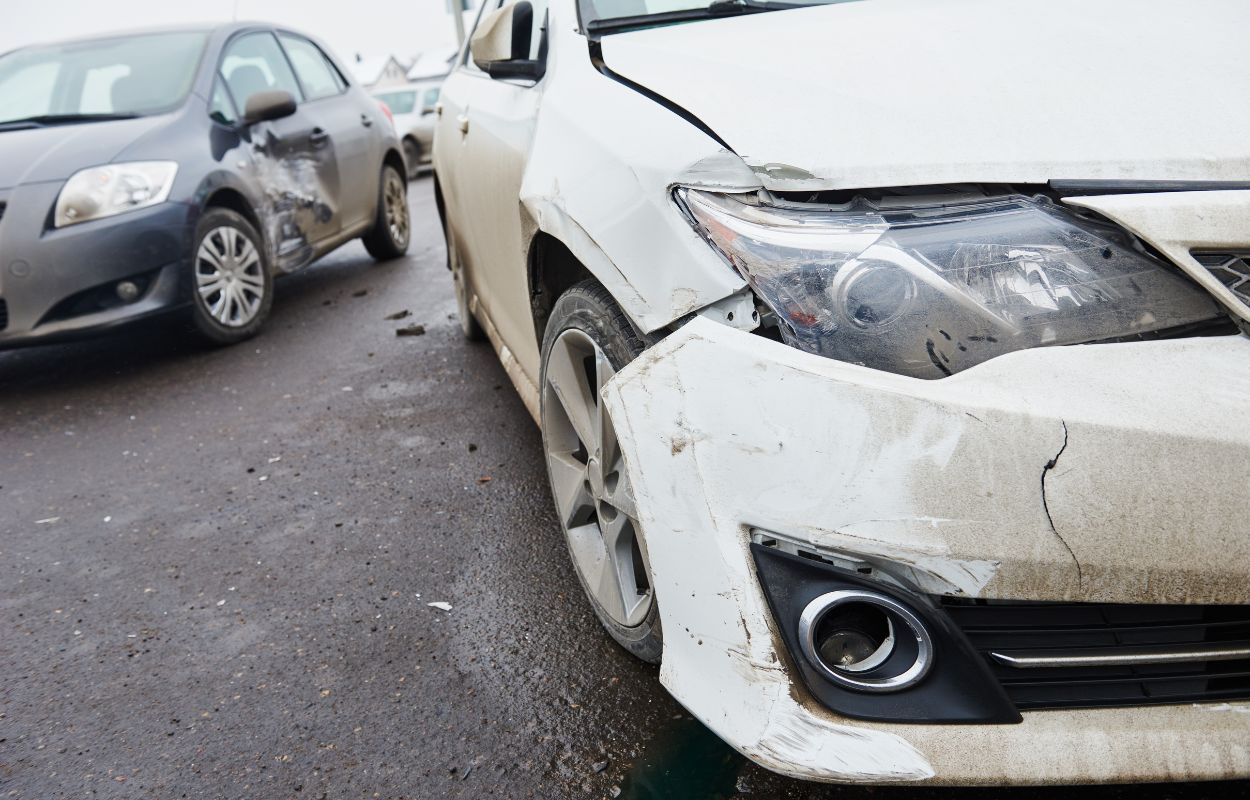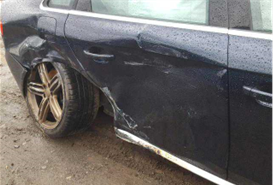Sideswipe Damage: Who Was Going Faster?

Bailey A. Hentz, BSAE, ACTAR, Collision Reconstruction Engineer
“Who was going faster?” is a question that often arises when determining fault for a sideswipe collision. When surveillance footage or pre-crash event data is unavailable to establish speed, the Collision Reconstruction Engineers at DJS analyze the damage of the vehicles involved to help answer the question on everyone’s mind.
Force is a vector, meaning it has both magnitude and direction. When two vehicles come into contact, they exert equal and opposite forces on one another. The damage to the vehicles resulting from these forces is evidence of the relative speeds of the vehicles.
Imagine a stationary brick wall. If a vehicle scrapes past that wall, the wall induces a rearward force on the vehicle, directed from the front of the vehicle toward its rear. Evidence that a rearward force was applied to a vehicle indicates it was traveling faster than the object it contacted. Conversely, evidence of a forward force indicates the vehicle was traveling slower than the object it contacted.
There are several common tell-tale types of vehicle damage that suggest the directionality of force.

Pushed-forward side mirror
Signs of Forward Force
- A pushed-forward side mirror
- A front bumper cover that is bent forward
- Forward-displaced wheel(s)
Signs of Rearward Force
- A rear bumper cover that is bent backward
- Rearward-displaced wheel(s)

Rearward-displaced wheel
While the directionality of force is not always obvious based on the damage sustained by the vehicle alone, the key indicators listed above provide a starting point for further analyses. More involved methods of determining which vehicle was traveling faster include analyses of the paint damage patterns and “matching” the components of the vehicles that came into contact. As always, the more physical evidence, the better. Tire marks left along the roadway and the vehicles’ final points of rest allow for a much more robust reconstruction of a sideswipe collision.
Categories: Bailey A. Hentz, BSAE, ACTAR | Collision Reconstruction | Collision Reconstruction EngineerTags: Directional Force | Physical Evidence | Sideswipe Collisions | Vehicle Speed


